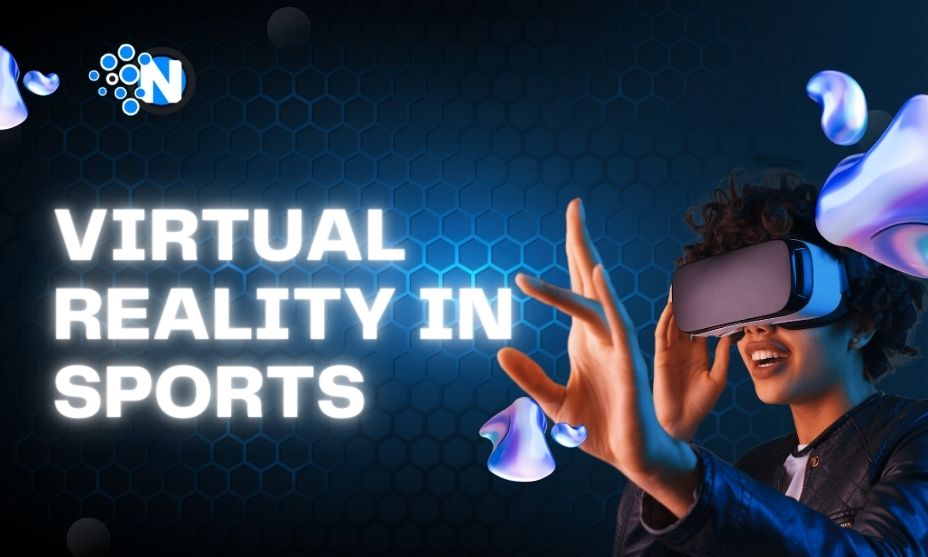Virtual Reality and Sports: A New Dimension for Athlete Training and Fan Engagement

Virtual Reality (VR) is no longer a thing in the future. It is making a huge impact in its current form as well. Various sectors are taking advantage of this innovation, including sports. In 2022, people spent about 23 billion dollars on VR worldwide. Most of this money, about 60%, was spent on headsets that they wear to experience VR
The growth is largely attributed to VR’s captivating three-dimensional experiences through devices like glasses, gloves, and bodysuits. Beyond just entertainment and gaming — sectors where VR has unquestionably made its mark, there’s a broader acceptance spanning healthcare, automotive, architecture, and education.
As investments in-game content, software, and equipment surge, the gaming and entertainment sectors are expected to remain at the forefront of VR’s expansion. Yet, among all these industries, the transformative impact of VR on sports is particularly intriguing. It’s changing how athletes train and deepening the connection between fans and the sports they love. Through the lens of VR, we’re ushering in a dynamic era in sports, bridging the real and virtual in ways previously unimagined.”
The Evolution of Virtual Reality in Sports
Virtual reality technology has changed a lot and now feels more real and involving than it used to be. With devices like PlayStation VR and Oculus Quest, it has turned into a huge industry worth billions of dollars. It’s used in many areas like healthcare, learning, and traveling.
One of the primary reasons behind VR’s rapid integration into sports is its ability to simulate real-world scenarios. Athletes can now train in virtual environments that closely mimic game situations, allowing them to refine their skills and decision-making abilities under high-pressure circumstances. Let’s delve into how virtual reality changes the game for athletes and coaches.
Enhanced Athlete Training
Immersive Skill Development
Athletes across different sports use VR to enhance their skill development. For example, in soccer, players can practice their ball control and shoot in realistic virtual scenarios. This level of immersion enables them to make split-second decisions, improving their on-field performance.

Mental Toughness Training
Success in sports is not just about physical skills but also mental resilience. VR can replicate the mental challenges athletes face during high-stress situations, such as penalty shootouts in soccer or clutch moments in basketball. This helps athletes train their minds to stay focused and composed in critical moments.
Injury Rehabilitation
VR is also making strides in injury rehabilitation. Injured athletes can use VR to engage in low-impact training that aids in their recovery while maintaining their skills. It provides a motivating and enjoyable way to stay active during rehabilitation.
Read Also: Dimensions of Virtual Reality Gaming in 2023
Data Analysis
VR systems have data analysis tools that track and record an athlete’s performance. This data is invaluable for coaches and players to identify strengths and weaknesses, enabling targeted training and improvement.
While virtual reality is revolutionizing the sports industry, it’s also creating exciting opportunities for fans to engage with their favorite teams and players. In addition to enjoying immersive experiences in virtual stadiums and live VR streaming, fans can further enhance their involvement through the best sports betting apps.
These apps offer a new dimension of excitement, allowing fans to place bets on esports tournaments and traditional sports events. As you watch the thrilling esports competitions in the upcoming year, consider exploring the best sports betting apps to add a layer of thrill and engagement to your viewing experience.
Revolutionising Fan Engagement
Beyond athlete training, virtual reality is also transforming how fans engage with their favorite sports. Traditional spectatorship is evolving into a more immersive and interactive experience.
Virtual Stadiums
VR allows fans to enter virtual stadiums and arenas from their homes. They can watch games as if they were sitting in the stands, complete with crowd noise and the venue’s ambiance. This brings the stadium experience to fans worldwide and opens new revenue streams for teams and leagues through virtual ticket sales.
Live VR Streaming
Major sporting events are now broadcast in virtual reality. Fans can put on their VR headsets and enjoy a 360-degree view of the action, feeling like they are on the field. This level of immersion adds a new layer of excitement to the viewing experience.
Interactive Fan Engagement
VR enables interactive engagement between fans and their favorite teams or athletes. Fans can participate in virtual meet-and-greets, Q&A sessions, or even training sessions with athletes. This creates a more intimate connection between fans and sports stars.
Virtual Reality Esports:
Esports, a rapidly growing industry, is embracing VR in unique ways. VR esports, such as Beat Saber and VRChat, are gaining popularity, attracting new fans. These games offer a blend of physical activity and competitive gaming that is entertaining to watch and participate in.

Enhanced Sports Betting:
The integration of VR into sports betting apps is taking the gambling experience to the next level. Users can enter immersive virtual sportsbooks to place bets and watch events unfold in real-time, creating a more engaging and interactive betting experience. Moreover, games like PokerVR have completely changed the concept of online betting.
Challenges and Future Directions
While virtual reality holds tremendous promise in the world of sports, some challenges must be addressed. The cost of VR technology remains a barrier for some athletes and teams, and there is a need for more accessible solutions. Moreover, ensuring the safety and privacy of athletes’ data in VR training environments is crucial.
Looking ahead, the future of virtual reality in sports is incredibly exciting. We can expect further innovations, improved affordability, and expanded applications. VR may become an integral part of sports, from youth development programs to professional leagues.
As technology advances, we may see VR-enhanced sports becoming a common feature in our lives. Fans will have the opportunity to not only watch their favorite athletes but also step into their shoes for a truly immersive experience. Athletes, on the other hand, will refine their skills in ways previously unimaginable, pushing the boundaries of human performance.
Conclusion
The age of virtual reality is coming for sports. These training techniques give athletes an edge and more immersive and interactive experiences for fans. In this sense, VR does not simply provide tool for sports development; rather, it is a revolution that changes the whole landscape in sports and at all different levels.
Virtual reality is expected to be more affordable as technology improves and is integrated in the sports sector in the near future. If you are an avid sports person searching for ways to give your game an edge, or even just someone who wants to enjoy sports with augmented realism-virtual reality is the next dimension destined bring about changes that will keep determining marks as we have always known.




